Log in or create new account to save this product to your wishlist.
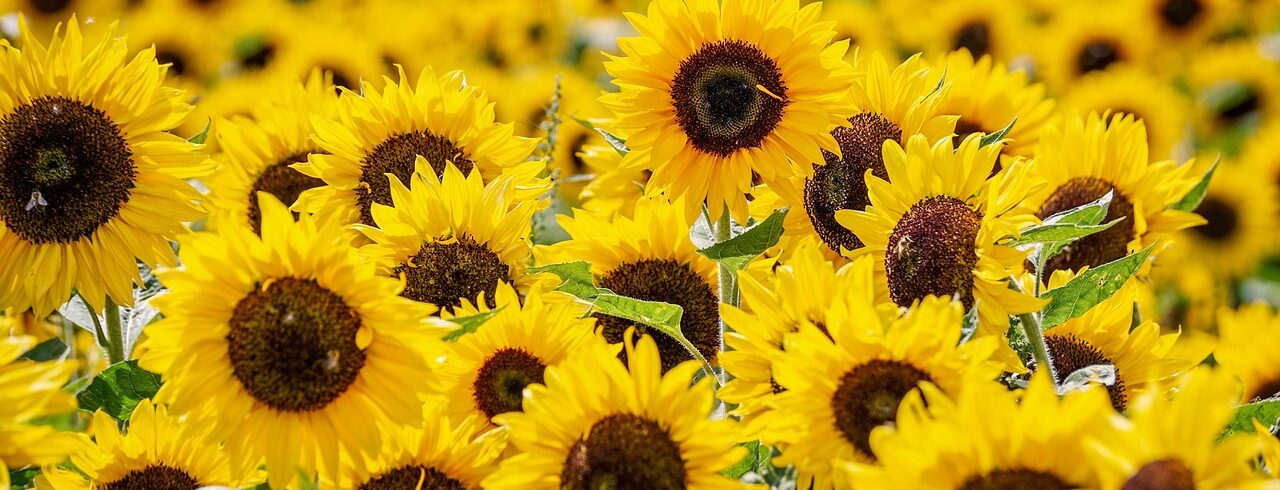
The Ultimate Guide to Summer Flowers: How to Choose and Care for the Best
Summer flowers bring beauty to any outdoor space, but they also attract butterflies, bees, and a range of beneficial insects into your garden. Find out how to choose the right flowers for your outdoor space.
🌱 All important maintenance moments for your lawn during the year. Leave your email and we will send you the lawn calendar for free.
Enter your email
Receive the lawn calendar in the mail
Enjoy a green lawn all year round!

- Order by 2PM = shipped today
- 250.000+ satisfied customers!
- 60 day satisfaction guarantee
Do you feel a little disappointed as you look out of your kitchen window? Perhaps the plants you’ve chosen are failing to bloom. Or maybe you’ve selected plants that aren’t right for your soil type. Alternatively, you might be considering which summer flowers would thrive in your shady garden.
- Understanding Summer Flowers
- Why Grow Summer Flowers?
- Choosing the Right Summer Flowers
- Our Top 10 Summer Flowers
- Caring for Summer Flowers
- Choosing your summer flowers is fun!
- FAQ
Summer is synonymous with vibrant colours, warm weather, and, of course, beautiful summer flowers. But you have to pick the right flowers for your particular garden’s conditions!
Whether you are a gardening novice or a seasoned horticulturist, this guide will help you choose and care for the best summer flowers and plants to transform your garden into a colourful sanctuary.
Understanding Summer Flowers
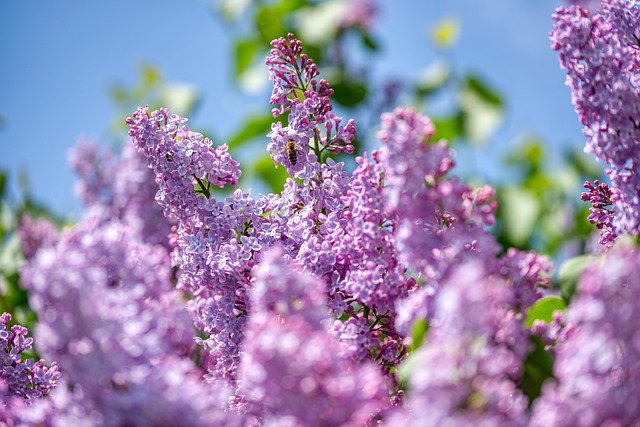
Before we delve into the specifics of our favourite UK summer flowers, it’s crucial to understand which plants produce the best blooms.
Essentially, summer flowering plants thrive in full sunshine during the summer months, blooming to exhibit a wide array of stunning colours. But others, such as hostas, pansies, and lobelia, thrive in partial or even full shade.
If you have a shady garden, check out our expert’s guide to plants for a shady garden!
But either way, you CAN get a stunning summer flowering bonanza in your UK garden!
Why Grow Summer Flowers?
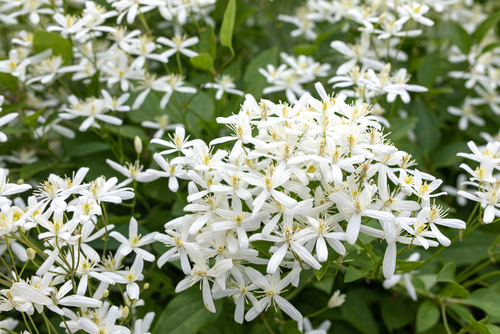
Growing summer flowers in your garden offers a range of benefits.
Not only do summer flowers enhance the aesthetic appeal of your garden, but they also have a positive impact on your mental and physical well-being.
Indeed, spending time in a green, flowery environment can significantly reduce stress levels, according to Gwenn Fried, manager of Horticulture Therapy at NYU Langone’s Rusk Rehabilitation.
But summer flowers are also great for your garden’s natural ecosystem — attracting butterflies, bees, and other pollinating insects that help your fruiting plants and bushes produce food for your dinner plate while sustaining other local wildlife, such as birds.
Choosing the Right Summer Flowers
You visit the garden centre, and you’re quickly overwhelmed with the wide range of summer flowering plants available!
How do you choose which will thrive in your garden?
Firstly, check the plant’s label — it will provide the basics, such as:
- The sunlight requirements
- The flowering period
- Additional nutrition needs
Some plant labels also explain the ideal soil type for the plant. And while this all feels like a lot of information, it’s just about understanding your garden’s specific conditions.
Questions to consider about your garden
When selecting the most suitable summer flowers for your garden, consider the following:
- The soil type — is it heavy clay or sandy? Heavy clay holds onto moisture, while sandy soil drains very quickly. Think about the water needs of your plant.
- The sun profile — do you have a garden in full sun, or are there shady areas? Is your entire garden plunged into the shade by a nearby tree?
- The existing plants in your garden — conifers, for example, are very thirsty, draining the surrounding water from the soil. So, choose drought-resistant summer flowers in this case.
- Your availability — does the plant need a lot of attention, or does it grow happily on its own? Can you provide the level of care it needs to thrive?
Our Top 10 Summer Flowers
1. Hardy Geraniums
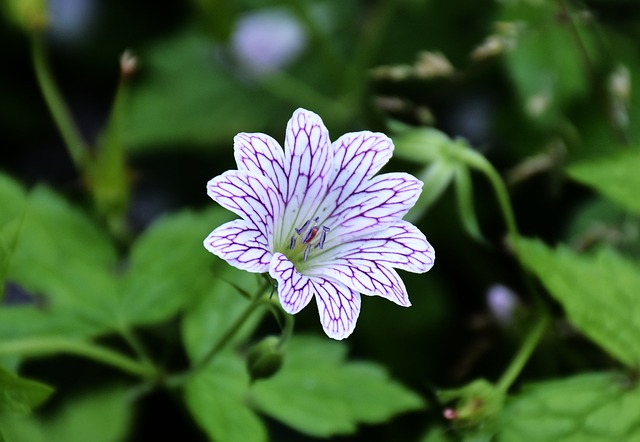
Easy to grow and great for pollinators, hardy geraniums are versatile perennials that bloom throughout summer and well into autumn.
They are available in various species, most of which can thrive in shade and sun.
Learn more about how to grow hardy geraniums.
- Sunlight Requirement: Full sun to partial shade
- Soil Type: Well-drained
2. Spreading Perennial Daisy (Erigeron karvinskianus)
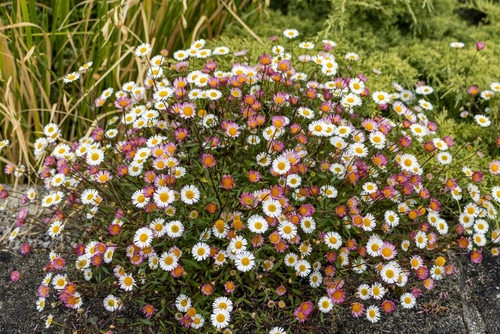
Also known as a spreading perennial daisy, Erigeron Karvinskianus provides an informal growth habit, making it perfect for planting in crevices of walls, steps or paving stones.
This stunning, cheerful plant blooms well into autumn, providing a prolonged flowering period.
- Sunlight Requirement: Full sun to partial shade
- Soil Type: Well-drained
3. Abutilons
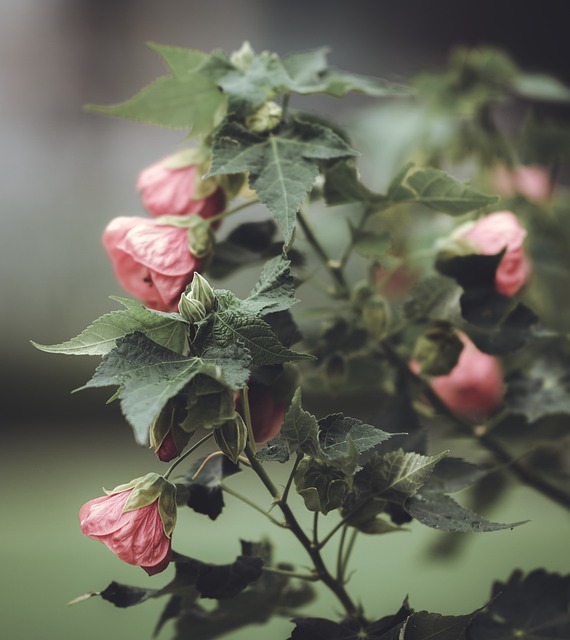
Abutilons, if protected from frost during winter, offer year-round flowering.
They require a sunny position with plenty of water and feeding for optimal growth. The trailing Abutilon, Abutilon megapotamicum, is a particularly popular choice, resembling the fuschia but with a lovely yellow teardrop beneath the central bloom.
- Sunlight Requirement: Full sun
- Soil Type: Rich, well-drained
4. Campanulas
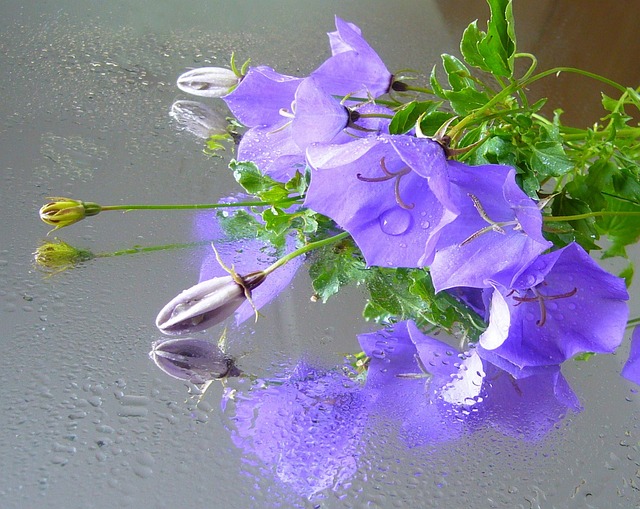
Creeping campanulas like Campanula portenschlagiana and Campanula poscharskyana are ideal for continuous flowering throughout summer.
Like Erigeron karvinskianus, they’re perfect for growing in cracks and crevices.
- Sunlight Requirement: Full sun to partial shade
- Soil Type: Well-drained
5. Iberis Sempervirens
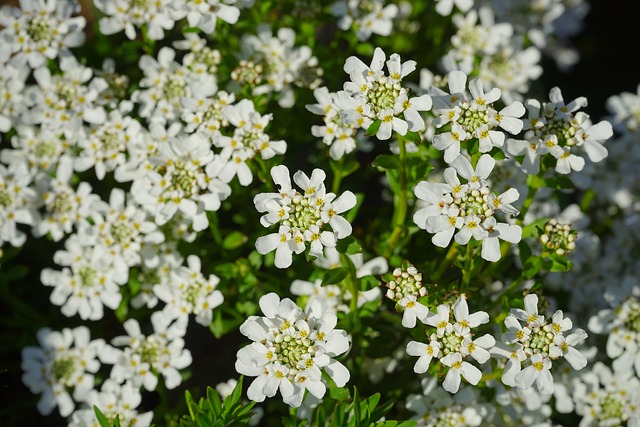
Commonly known as candytuft, these perennial, low-growing plants are excellent as ground cover for the front of borders or in containers.
They provide frothy blooms from spring to autumn.
- Sunlight Requirement: Full sun
- Soil Type: Well-drained
6. Rose

No English garden would be complete without a summer rose. And there are hundreds of varieties available, each suited to different garden conditions. Whether you go for a trailing or climbing variety depends on the space you have in your garden.
Tips for choosing the right rose:
- Shady/North-facing wall: R. Madame Alfred Carriere
- Sunny/Sheltered wall: R. banksiae Lutea
- Training up pillars: R. Pink Perpetue
- Gorgeous foliage R. glauca
- Impressive rosehips: R. Geranium (moyesii hybrid)
- Fragrance R. Gertrude Jekyll
Each rose has its individual needs, but — in general — they need well-fertilised soil. Well-rotted horse manure is excellent for your roses, but you can also buy a range of rose-specific fertilisers which offer excellent nutrition.
7. Sunflowers
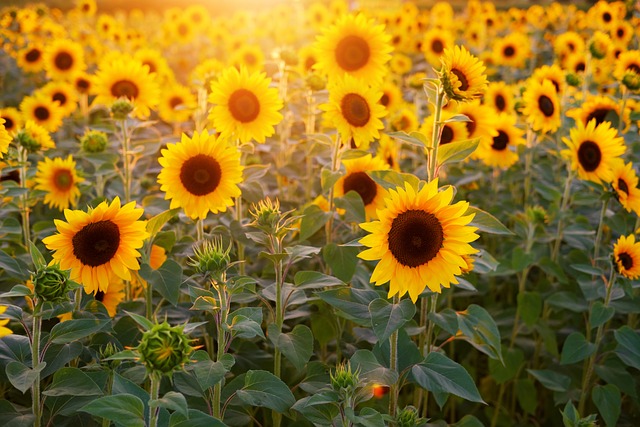
Sunflowers are incredibly easy to grow, bringing a jolly yellow sunshiney feel to any garden. They grow in poor and well-fed soil — I’ve even seen them growing in cracks between paving slabs! But, in general, they’ll always do better in well-nourished soil.
Fast-growing and requiring very little care, sunflowers are excellent companion plants around veg patches — attracting the bugs to their sticky sap and drawing potential pests away from your crops!
- Sunlight Requirement: Full sun
- Soil Type: Well-drained but well-watered soil
8. Dahlias

Dahlias are quintessentially English plants offering stunning flowers of almost every imaginable colour. With a wide-ranging palette of shapes and sizes — some as large as dinner plates — your garden will never feel dull with a range of dahlias in bloom between July and October.
These cheerful flowers complement the cosmos, Verbena, canna, and exotic grasses.
Originally native to Central America, they were introduced to Europe by the Spanish, who, along with potatoes and tomatoes, introduced Dahlias initially for eating! The flowers and tubers are edible, offering the crisp freshness of a water chestnut with a hint of spicy apple!
- Sunlight Requirement: Full sun. Protect them from frost.
- Soil Type: Well-fed, well-drained soil.
9. Marigolds

Marigolds are brilliantly colourful and prolific summer flowering plants which are equally happy in pots as they are in the ground. Offering blooms of yellow, orange, and even red and white, marigolds attract pollinating insects and make excellent companion plants for your veg patch.
These half-hardy annuals may survive longer than one season if there’s a mild winter.
Needing full sun and fertile, well-drained soil, marigolds are relatively drought-resistant and intensely aromatic, introducing a delicious fragrance as you brush past the leaves.
- Sunlight Requirement: Full sun.
- Soil Type: Well-fed, well-drained soil.
10. Cosmos
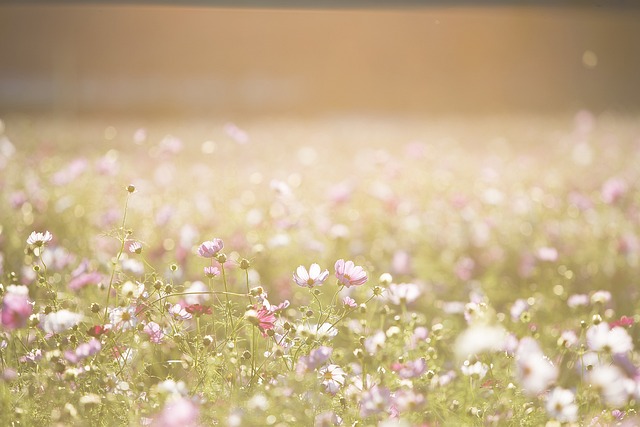
These lovely starburst-like flowers offer a jolly, exotic feel to a summer garden.
Sun-loving and with a long flowering season, the cosmos fills your flowerbeds with a shock of bright flowers ranging from white to pink, orange, and red. The feathery foliage provides textural interest in your summer flower bed.
- Sunlight Requirement: Full sun. Deadhead to prolong flowering.
- Soil Type: Well-drained soil.
Caring for Summer Flowers
Once you’ve chosen your summer flowers, the next step is ensuring they thrive. Here are some care tips:
1. Watering
During summer, most plants require regular watering to stay healthy and hydrated. However, be careful not to overwater – it could cause root rot.
2. Fertilising
Most summer flowers benefit from regular feeding. A weekly application of tomato fertiliser, for example, can promote new flower growth.
Alternatively, use well-rotted homemade composts or even a compost “tea” made from comfrey, nettles, or using the liquid from a wormery!
Find a fertiliser with plenty of nitrogen to help the plant grow more quickly.
3. Pruning & Deadheading
Pruning maintains the shape of your plants and encourages new growth. However, deadheading (or removing spent blooms) can extend the flowering period and keep your plants looking tidy.
Always remove dead flowers; otherwise, the plant will put its energy into generating seeds rather than producing new flower heads.
4. Mulching
Mulching helps to maintain soil moisture and suppress weeds. It also provides essential nutrients to your plants as it breaks down.
There are many types of mulch suitable for summer flowers, including:
- Leaf mould
- Wood bark
- Homemade compost
- Cloth or fleece mulch
Choosing your summer flowers is fun!
Growing summer flowers can be a rewarding experience, offering a kaleidoscope of colour to your garden and a host of mental and physical health benefits.
By carefully selecting the right varieties for your specific garden conditions and providing them with the care they need, you can enjoy a blooming garden that lasts all summer long.
FAQ
Summer flowers bring beauty to your garden, but they also attract butterflies, bees, and other beneficial pollinating insects. Some of our favourite summer flowers include roses, marigolds, pansies, cosmos, hostas, dahlias, lobelia, campanulas, and sunflowers.
There are many varieties of summer flowers to be found in UK gardens, but some of the most popular are hibiscus, petunia, amaranth, sunflowers, and roses. The summer flower most associated with England is probably the rose.
Most flowering plants have a relatively short window of bloom. However, some plants flower from spring through to summer and even autumn. These include hellebore, Virginia bluebells, Viola, Peony, Nepeta, Iris, Baptisia, Geranium, Echinacea, and Black-Eyed Susan.
Any questions?
I hope I’ve provided some inspiration for your summer garden, but if you have questions, don’t hesitate to get in touch.
Or check out our super-comprehensive and detailed Help & Advice section for everything lawn care and garden-related.
Thanks for reading!
-
How to Grow Eucalyptus in British GardensWith a little love and care, eucalyptus trees can thrive in English gardens. Since they don’t germinate well without proper help, there are not considered invasive. So, there is no reason not to plant them if you enjoy their looks.Read more
-
Transform Your Garden with All-Year-Round Flowering PlantsDid you know you can enjoy blooming flowers even in January? With the right selection of all year round plants, there’s no need to wait until spring to add some colour to your garden.Read more
-
How to Create a Butterfly Garden: A Simple Guide for British GardensThe UK's butterfly population includes 59 different species. These beautiful winged creatures face a steady decline because of habitat loss, pollution and changing weather patterns. Your garden can become a vital link between nature reserves and natural habitats. Let’s explore how.Read more
-
Volcanic Rock Dust for Your Garden—Application and TipsDid you know that volcanic rock dust is a brilliant organic soil improver? This article explains exactly what it's good for and how to use it properly.Read more
-
How to Use Landscape Fabric ProperlyIf weeds or erosion in your garden are troubling you, landscape fabric might be the solution. We’ll explain how and when to use it properly, just keep on reading.Read more
-
Hostas: A Complete Care GuideIf you have a north-facing garden or some shady corners on your property, hostas are the plants for you. These green delights thrive particularly well in partial to full shade and require consistently moist soil to perform at their best.Read more
-
How to Grow Grapes in Your Garden: A Simple Step-by-Step GuideGrapevines produce some tasty fruits, but often they are simply grown for their gorgeous leaves. Whatever your motivation may be, we have a guide on how to grow grapes for you.Read more
-
Worm Composting Made Simple: From Kitchen Scraps to Garden GoldDid you know that a single pound of composting worms can devour half their body weight in waste every day? That's roughly twelve pounds of kitchen scraps transformed into garden gold each month! We will look at how to make this happen.Read more
Leave a comment
Your answer will be displayed on the site and the interested party will be notified by email.
Leave a comment
Have a question or want to share your experience? Leave us a comment.

- Order by 2PM = shipped today
- 250.000+ satisfied customers!
- 60 day satisfaction guarantee

- Order by 2PM = shipped today
- 250.000+ satisfied customers!
- 60 day satisfaction guarantee

- Order by 2PM = shipped today
- 250.000+ satisfied customers!
- 60 day satisfaction guarantee

🌱 All important maintenance moments for your lawn during the year. Leave your email and we will send you the lawn calendar for free.
Enter your email
Receive the lawn calendar in the mail
Enjoy a green lawn all year round!












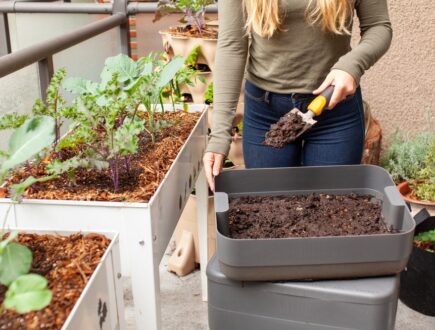








Comments (0)
There are no comments yet. Well then, what are you waiting for to
Be the first to write your comment!inaugurate this pretty page?
Do you have some comments?